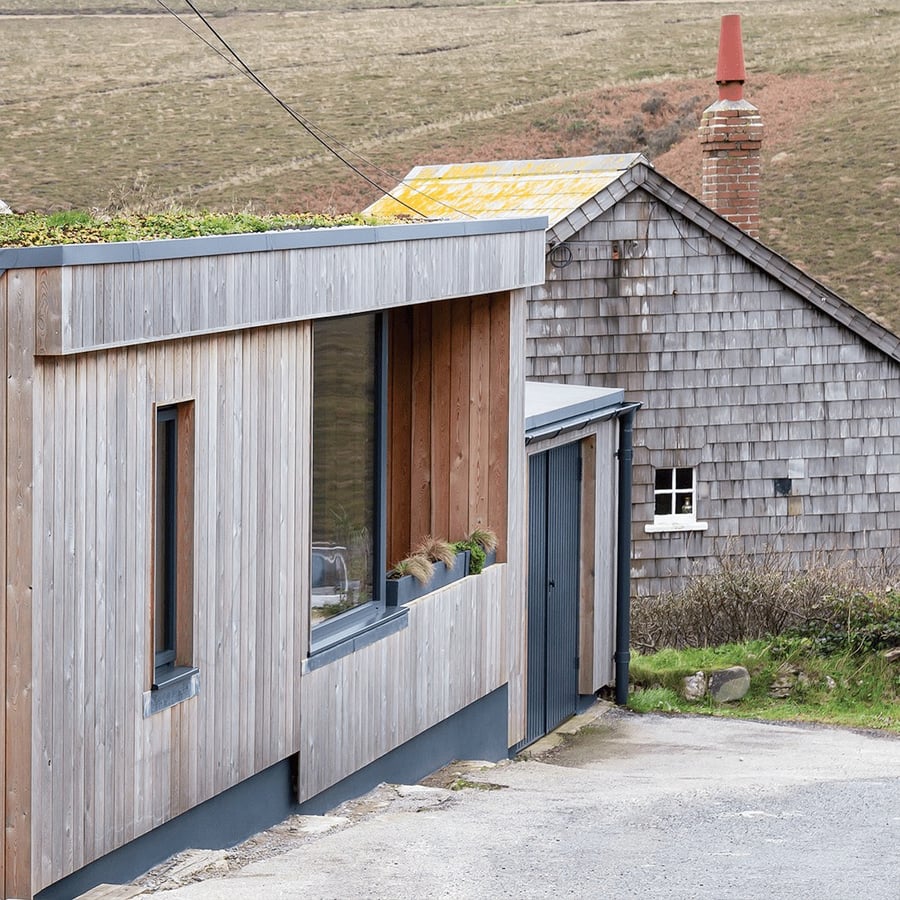In an era where our collective consciousness increasingly leans towards sustainability, the concept of sustainable building design emerges not just as a trend but as a necessity. This blog ventures into the intricate world of sustainable building design, unraveling its multiple facets and profound significance. From the subtleties of passive and active design strategies to the ambitious objectives of net-zero and carbon-neutral buildings, our exploration is guided by a commitment to understanding how these innovative practices shape our environment and contribute to a healthier planet.
What is a sustainable building design?
Sustainable building design represents an approach in modern architecture, intertwining environmental consciousness with innovative construction methodologies. Below we highlight some of the key components within sustainable design:
Passive sustainable design - is the art of leveraging natural resources to minimise environmental impact. This approach focuses on utilising sunlight, wind and other natural elements to regulate temperature and lighting. For instance, strategically placed windows can maximise natural light and reduce the need for artificial lighting, while thermal mass materials store and release heat, maintaining comfortable indoor temperatures. Such designs significantly lower energy consumption, fostering a harmonious relationship between the built environment and nature. Take a look at how we utilised sunlight in our Seeing Clearly project.
Active sustainable design - involves the use of technology to achieve sustainability goals. This includes the installation of solar panels, wind turbines, and energy-efficient HVAC systems. By actively managing energy and resource use, these designs aim for high performance and low environmental impact. The integration of smart technologies, like automated lighting and heating systems, further enhances efficiency, ensuring that the building's operational footprint is as light as possible. We focused on this design concept when working on our Eco Education project, incorporating solar panels and sustainable materials.
Net zero building - The concept of a net-zero building revolves around the balance between the energy it consumes and the energy it produces. Achieving net-zero status means that the total amount of energy used by the building on an annual basis is roughly equal to the amount of renewable energy created on-site. This ambitious goal is accomplished through a combination of energy efficiency measures and renewable energy production, like solar power, making the building self-sustaining in terms of its energy needs.
Carbon neutral building - Carbon neutrality in building design extends beyond energy balance. It encompasses the entire carbon footprint of the building, from construction materials to operational emissions. A carbon-neutral building seeks to offset its carbon emissions through various strategies, including using low-impact materials, enhancing energy efficiency, and investing in external projects like reforestation. The ultimate aim is to achieve a net-zero carbon footprint, making the building a positive contributor to the environment.

Why is it important to consider sustainable building design?
The dire reality of the climate crisis necessitates a shift towards sustainable building designs. Buildings play a significant role in global carbon emissions, contributing to the warming of our planet. Sustainable design, therefore, is not a luxury but an imperative, offering a way to mitigate the impact of construction and urban development on the environment.
The construction sector is a major contributor to global heating, with its extensive use of energy-intensive materials and processes. By adopting sustainable design principles, the industry can reduce its carbon footprint, transitioning towards more eco-friendly practices. This shift is vital in our collective efforts to combat climate change and preserve our ecosystem for future generations.
Sustainable buildings do more than just minimise harm; they can actively enhance local ecologies and habitats. Incorporating green spaces, such as rooftop gardens, supports biodiversity, while the use of sustainable materials can reduce pollution and resource depletion. Thoughtfully designed sustainable buildings can contribute positively to their surroundings, creating a symbiotic relationship with the natural world.
The transition towards sustainable building design opens up numerous opportunities for renewable energy integration. From solar panels to geothermal systems, these technologies not only reduce reliance on fossil fuels but also promote energy independence. The incorporation of renewable energy sources is a cornerstone of sustainable design, paving the way for a cleaner, more resilient energy future.
Is a sustainable design more than just the building?
Sustainable design transcends the physical structure of the building, addressing broader environmental concerns such as waste reduction. During construction, sustainable practices involve minimising waste and maximising the use of recycled materials. Post-construction, the focus shifts to reducing waste generated by the building's occupants, through efficient waste management systems and recycling initiatives.
Water conservation is another critical aspect of sustainable building design. Techniques like rainwater harvesting, low-flow fixtures, and water-efficient landscaping help significantly reduce water usage. These measures not only conserve a precious resource but also lessen the building's impact on local water systems and infrastructure.
The health benefits of sustainable design are manifold. By prioritising natural light, clean air, and non-toxic materials, these buildings create healthier living and working environments. This holistic approach to design not only benefits the planet but also enhances the well-being of its occupants.
Lowering energy consumption is a fundamental goal of sustainable building design. Through energy-efficient appliances, better insulation, and smart building systems, sustainable buildings significantly reduce their energy footprint. This not only cuts costs but also lessens the strain on our planet's resources.
Are there benefits to a sustainable building design?
One of the most tangible benefits of sustainable building design is the reduction in running costs. Energy-efficient systems and renewable energy sources lead to lower utility bills, making these buildings economically as well as environmentally sustainable.
The emphasis on natural elements and non-toxic materials in sustainable buildings translates into significant health benefits for occupants. Improved air quality, natural lighting, and green spaces contribute to better mental and physical health, enhancing the quality of life.
The environmental benefits of sustainable building design are profound. From reducing greenhouse gas emissions to conserving natural resources, these buildings play a crucial role in our fight against environmental degradation and climate change.
In aligning our built environment with the principles of sustainability, we forge a future that is kinder to our planet and nurturing to its inhabitants. It's an invitation to reimagine our spaces, not just as structures, but as living, breathing entities that contribute positively to our world.
Curious about how sustainable building design can transform your space and the planet? Get in touch with us to explore the possibilities and embark on a journey towards a more sustainable future. Take a look at our projects to gain inspiration and see where we’ve incorporated sustainable design. Why not also take a look at our blog exploring sustainable architecture.



